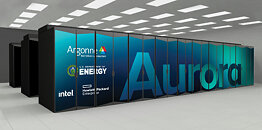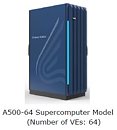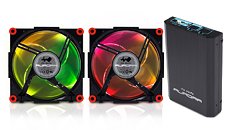
Intel Aurora Supercomputer Will Touch 2 ExaFLOPs of Computational Power
Intel's Aurora supercomputer is a $500 million contract with the US Department of Energy to deliver an exascale supercomputer for Argonne National Laboratory. The project aims to build a machine capable of cranking over one ExaFLOP of computing at sustained workloads. The supercomputer aims to reach two ExaFLOPs of computing power once the installation system is completed and powered. The contract bound Intel to create accelerators that are powerful enough to achieve this magical number. However, they left Intel with room to do a little bit extra. With Ponte Vecchio GPU behind the project, it seems like the GPU is performing better than expected.
According to Intel's CEO, Pat Gelsinger, the system will reach over 2 ExaFLOPs at peak and a bit below in sustained workloads. As per preliminary calculations done by The Next Platform, the system's estimations point towards 2.43 ExaFLOPs peak and around 1.7 ExaFLOPs in sustained workloads at Double-precision floating-point format math, aka FP64. The system will utilize Intel Xeon Sapphire Rapids processors with HBM memory and the powerful Ponte Vecchio GPU with 47 tiles and over 100 billion transistors.
According to Intel's CEO, Pat Gelsinger, the system will reach over 2 ExaFLOPs at peak and a bit below in sustained workloads. As per preliminary calculations done by The Next Platform, the system's estimations point towards 2.43 ExaFLOPs peak and around 1.7 ExaFLOPs in sustained workloads at Double-precision floating-point format math, aka FP64. The system will utilize Intel Xeon Sapphire Rapids processors with HBM memory and the powerful Ponte Vecchio GPU with 47 tiles and over 100 billion transistors.











































































